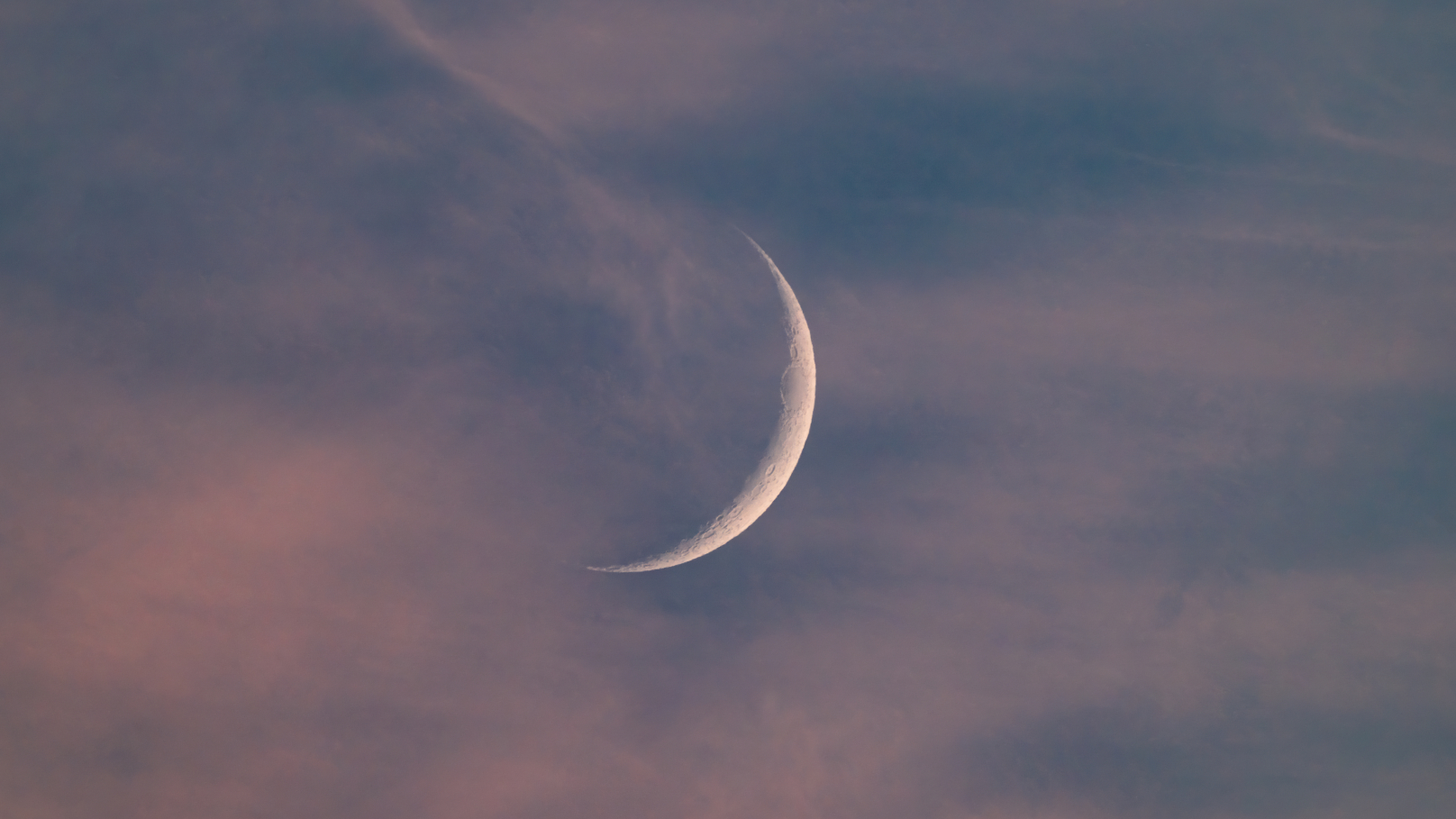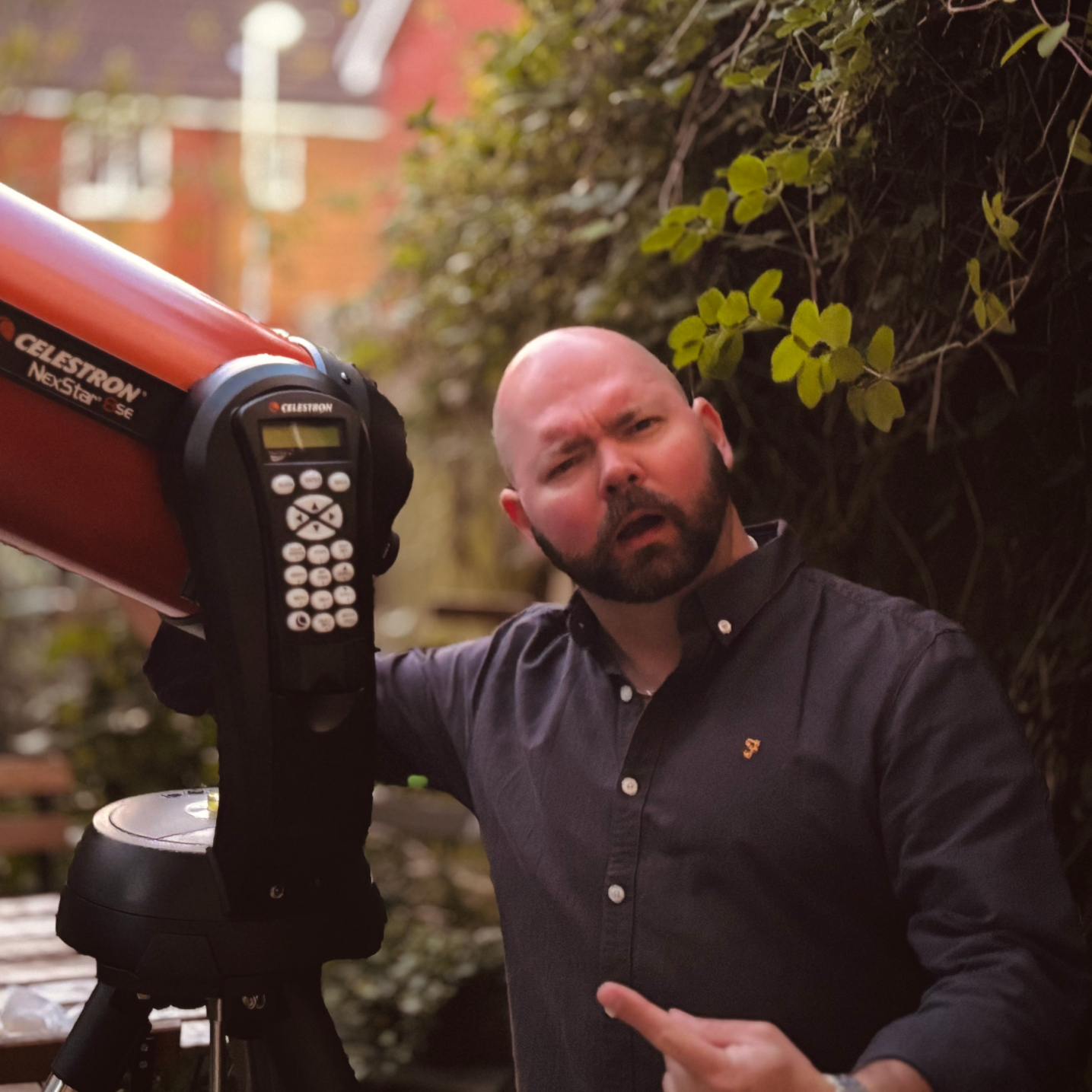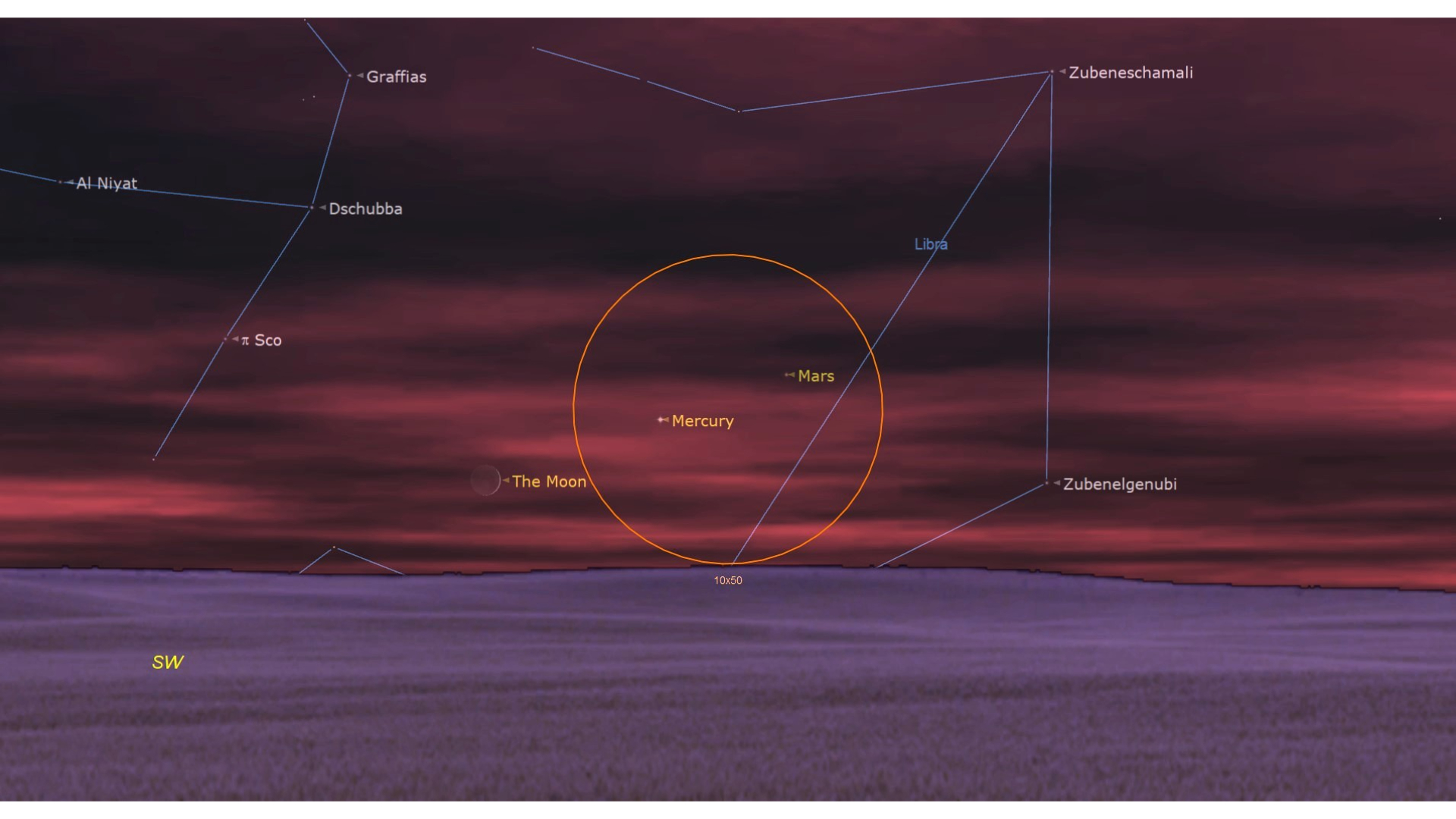See a razor-thin crescent moon line up with Mars and Mercury at sunset on Oct. 23
The waxing moon will appear alongside Mars and Mercury as the sun sets on Oct. 23

Look to the southwestern horizon at sunset on Oct. 23 to see the slender form of the crescent moon shine close to Mercury and Mars in the evening sky.
The 6%-lit waxing crescent moon will be visible roughly 5 degrees above the horizon as the sun sets on Oct. 23, with Mercury appearing as an "evening star" to the upper right of its sickle-like form and the red light of Mars shining just beyond, to form a cosmic lineup in the evening sky.
All three worlds will lie within 10 degrees of each other — roughly the width of your clenched fist held at arm's length against the night sky — with Mercury and Mars close enough to comfortably share the field of view of a pair of 10x50 binoculars. But remember - even just glancing at the sun with a pair of binoculars can lead to permanent loss of vision. Be sure to use a trusted website like TimeandDate to check sunset times for your locale and ensure that our parent star is well below the horizon before attempting to view the moon beside these planets with a magnifying aid.

The Celestron NexStar Evolution 9.25 is one of the best telescopes you can buy. Boasting a 9.25-inch aperture and a whole host of accessories, this is top-of-the-range gear. The remote operability means it is easy to track celestial objects from your phone. Add to that a powerful lithium-ion battery, allowing for ten hours of uninterrupted stargazing.
The razor-thin form of the crescent moon will make for a challenging target to spot against the glow of the setting sun on Oct. 23, just two days out from its new moon phase on Oct. 21. The moon, Mercury and Mars will set less than an hour after the sun, so be sure to stake out a vantage point with a clear view of the southwestern horizon to ensure a good view of the solar system parade.
Mercury's tight orbit around the sun will see it depart Mars to travel leftward in the direction of the constellation Scorpius in the days ahead, as the crescent moon grows thicker ahead of its first quarter phase on Oct. 29, when its entire right side will be lit by direct sunlight.
Stargazers interested in getting a closer look at the wonders of the night sky should check out our roundups of the best telescopes and binoculars available in 2025, while those new to the hobby should read our roundup of the best smartphone astronomy apps for navigating the post sunset realm.
Editor's Note: If you would like to share your astrophotography with Space.com's readers, then please send your photo(s), comments, and your name and location to spacephotos@space.com.
Breaking space news, the latest updates on rocket launches, skywatching events and more!

Anthony Wood joined Space.com in April 2025 after contributing articles to outlets including IGN, New Atlas and Gizmodo. He has a passion for the night sky, science, Hideo Kojima, and human space exploration, and can’t wait for the day when astronauts once again set foot on the moon.
You must confirm your public display name before commenting
Please logout and then login again, you will then be prompted to enter your display name.

